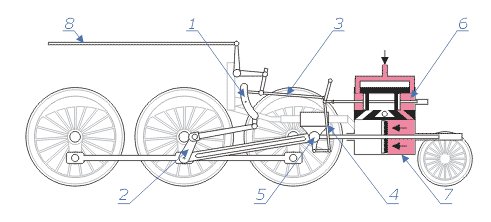Revolutionary Chipscale Laser Enhances Optical Metrology and LiDAR

In a significant advancement for optical metrology and LiDAR applications, researchers from the University of Rochester and the University of California, Santa Barbara have developed a groundbreaking chipscale laser utilizing lithium niobate. This compact laser, measuring just 2 mm in width and approximately 2 cm in length, offers unprecedented speed and accuracy in optical measurements, which are crucial for enhancing the performance of both optical metrology and LiDAR systems.
The team, led by Shixin Xue, a graduate student, and Qiang Lin, a professor of electrical and chemical engineering and optics at the University of Rochester, has harnessed the Pockels effect in lithium niobate to achieve rapid frequency modulation capabilities. "We aimed to make optical measurement systems smaller, simpler, and more efficient," Xue stated. Traditional optical measurement systems often rely on bulky external components, limiting their practical applications. The new design integrates thin-film lithium niobate (TFLN) with semiconductor laser technology, which simplifies the overall architecture and enhances system reliability.
The chipscale laser's ability to change color across a broad spectrum up to 10 quintillion times per second sets it apart from conventional technologies. This rapid modulation allows for highly accurate distance and velocity measurements—capabilities that are essential for next-generation LiDAR systems, particularly those employed in autonomous vehicles. Xue explained, "For instance, our laser can measure speeds of up to tens of meters per second with centimeter-level distance resolution."
The laser's design incorporates an extended distributed Bragg reflector (DBR) on a silica cladding, which improves side-mode suppression and narrows the laser linewidth. The integration of electrodes directly into the lithium niobate structure allows for quick and precise tuning of the laser frequency using electrical signals, eliminating the need for external modulators.
Remarkably, the team achieved a frequency chirp rate of approximately 2x10^19 Hz/s—over 100 times faster than their initial expectations. This advancement opens new avenues for applications requiring high-frequency chirp rates, such as optical atom clocks, quantum sensors, and quantum computing.
Key specifications of the chipscale laser include an intrinsic linewidth as low as 167 Hz, a mode-hop-free tuning range of up to 24 GHz, and long-term frequency stability of ±6.5 MHz over an hour using direct feedback locking with a gas-cell reference. These features position the laser to meet the demands of upcoming frequency-modulated continuous-wave LiDAR systems, which require substantial tuning range.
The research team anticipates practical demonstrations of fully integrated systems within the next one to two years. Following these demonstrations, they expect to see broader adoption and the emergence of application-specific developments. As Xue remarked, "Our immediate focus is on packaging everything together to enhance mechanical stability and integration, alongside exploring applications that can leverage the ultrafast frequency chirp rate."
This innovative work has garnered support from the U.S. Defense Advanced Research Projects Agency (DARPA) through its Lasers for Universal Microscale Optical Systems program, as well as the National Science Foundation. The implications of this chipscale laser are vast, potentially transforming optical measurement technologies and expanding the capabilities of LiDAR systems in various fields. As the team works towards commercialization, the future of precision optical technologies looks promising, with the potential for widespread real-world applications.
For further reading, refer to the study by Shixin Xue et al., published in Light Science & Applications (2025).
Advertisement
Tags
Advertisement





